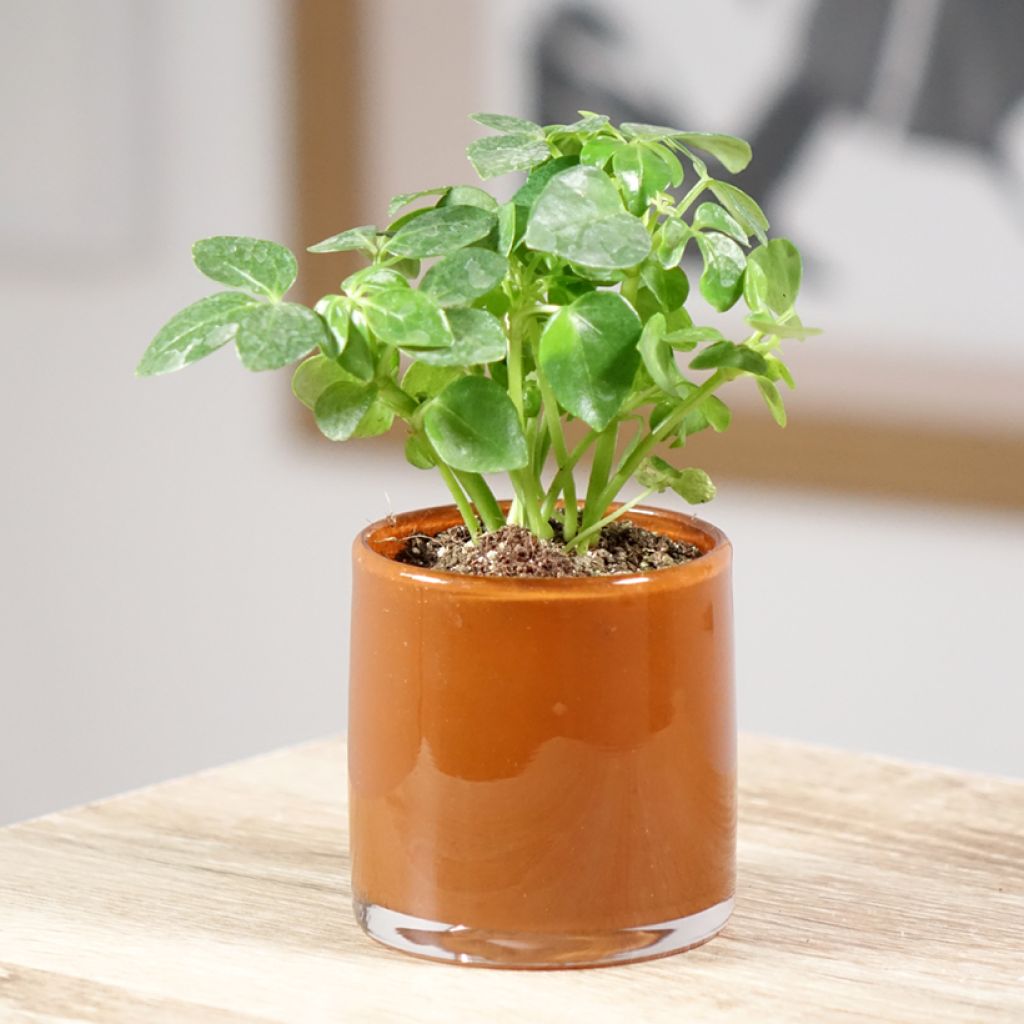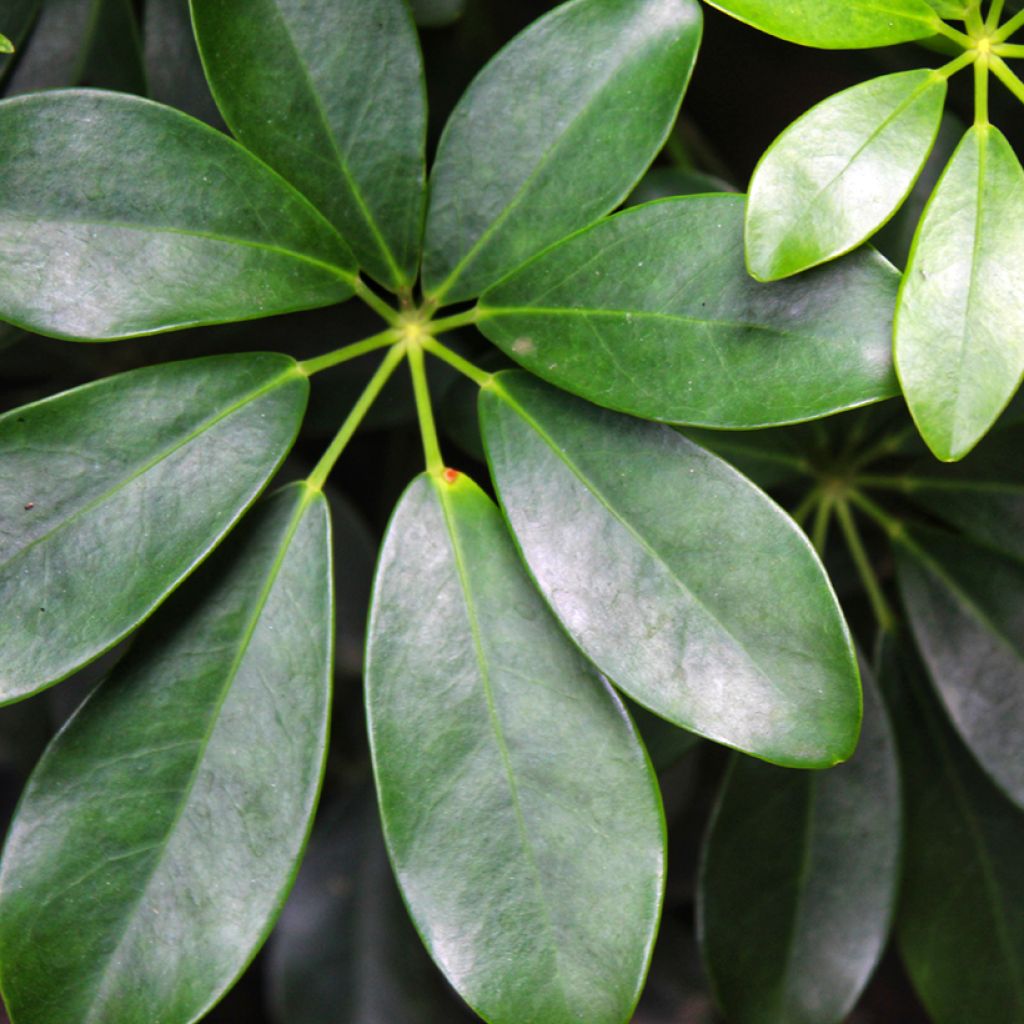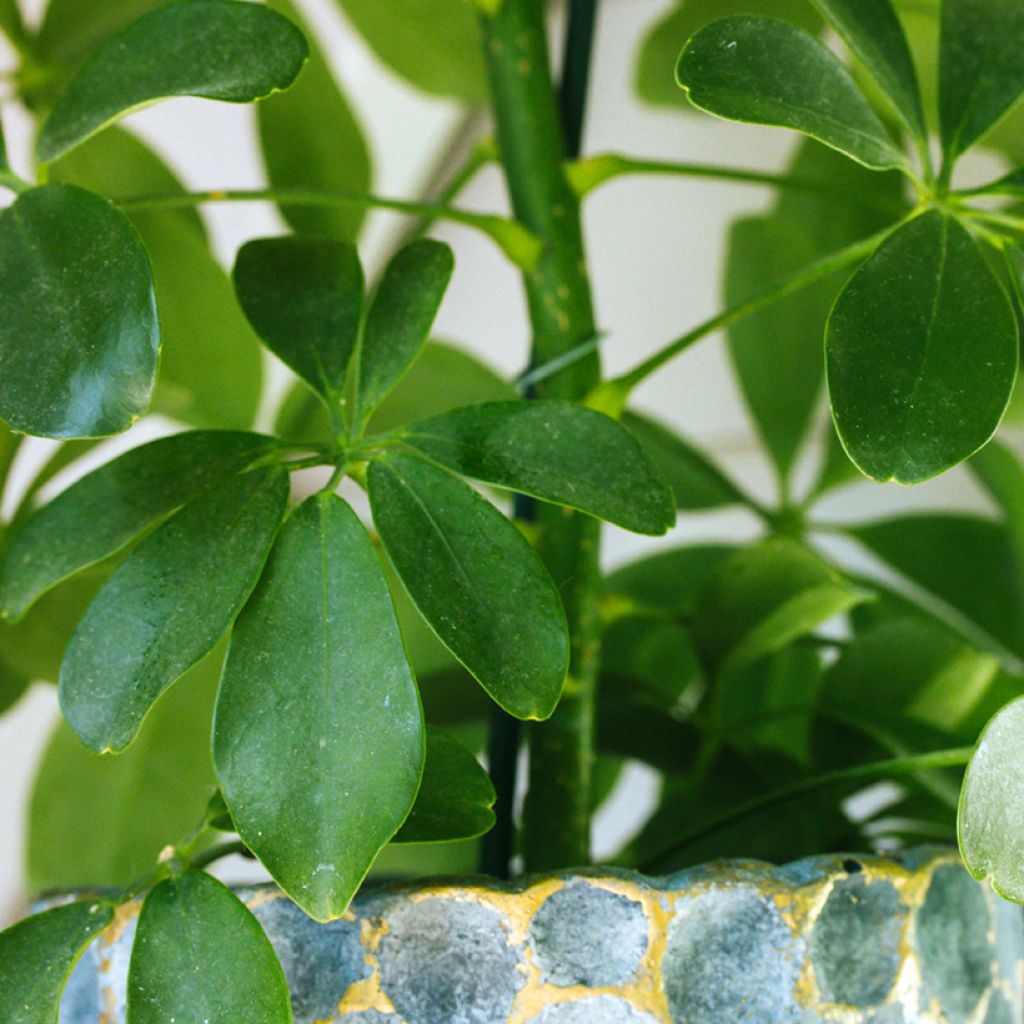

Schefflera arboricola - Petit arbre-ombelle, Arbre-ombrelle nain, Scheffléra, Arbre-parapluie, Parasol, Arbre du bureau


Schefflera arboricola - Petit arbre-ombelle, Arbre-ombrelle nain, Scheffléra, Arbre-parapluie, Parasol, Arbre du bureau


Schefflera arboricola - Petit arbre-ombelle, Arbre-ombrelle nain, Scheffléra, Arbre-parapluie, Parasol, Arbre du bureau
Schefflera arboricola - Umbrella tree
Schefflera arboricola
Umbrella tree
This item cannot be shipped to the selected country
Delivery charge from 6,90 €
More information
Shipping country:
-
-
-
-
-
-
-
-
-
-
-
-
-
-
-
-
-
-
-
-
-
-
-
-
-
-
-
-
-
-
-
-
Schedule delivery date,
and select date in basket
This plant carries a 30 days recovery warranty
More information
We guarantee the quality of our plants for a full growing cycle, and will replace at our expense any plant that fails to recover under normal climatic and planting conditions.
From 7,90 € for pickup delivery and 6,90 € for home delivery
Express home delivery from 8,90 €.
Description
The Schefflera arboricola, commonly known as the dwarf umbrella bush, is an interesting houseplant for its ornamental foliage and easy maintenance. Its glossy leaves arranged in an umbrella-like fashion will bring a breath of exotic freshness to your interior. This variety fits perfectly in a bright living room or office, in both contemporary and more classic décors. Ideal for beginners, it requires minimal care while offering a striking green presence.
The Schefflera arboricola belongs to the Araliaceae family. It is now classified under the botanical synonym Heptapleurum arboricola. The Schefflera genus includes around 900 species of tropical plants, primarily native to Southeast Asia and the Pacific Islands. In their natural habitat, these plants often grow in humid undergrowth, clinging to tree trunks with their aerial roots. Originating from Taiwan and southern China, this wild species is popular due to its decorative foliage and ease of care. The umbrella bush is an evergreen with an upright yet bushy habit. Indoors, depending on growing conditions and pot size, it can reache a height of 1 m to 2.50 m, with a spread of 1 to 1.2 m. Its growth is considered moderately fast. The palmate leaves are compound, consisting of 7 to 9 ovate, glossy leaflets, ranging from light to dark green. The leaflets measure between 9 and 20 cm long and 4 to 10 cm wide. Indoor flowering is rare, but when it occurs, it occurs as small yellowish flowers clustered in umbels. The species name 'arboricola' means 'living in trees', referencing its epiphytic (soil-free) lifestyle in nature.
Indoors, the Schefflera arboricola prefers bright, indirect light, though it will tolerate moderate light. Average ambient humidity suits it, though it enjoys occasional misting. The ideal temperature ranges between 15 and 25°C, with a preference for relatively stable conditions. The Schefflera arboricola contains toxic compounds if ingested, including calcium oxalate crystals.
The Schefflera arboricola will thrive in a bright living room or well lit office, where its upright, bushy silhouette will add a touch of natural freshness. Showcase it in a stylish large pot to enhance its modern, minimalist appeal. Placed near a window with filtered light (no direct sun), it will steal the show! For an even trendier effect, pair it with materials like rattan or metal in a Scandinavian or bohemian décor. To create a lush atmosphere, position this Schefflera near a Ficus elastica with its broad, glossy leaves and a Dracaena fragrans with its elongated foliage.
Report an error about the product description
Schefflera arboricola - Umbrella tree in pictures


Foliage
Plant habit
Flowering
Botanical data
Schefflera
arboricola
Araliaceae
Umbrella tree
China, Southeast Asia
Safety measures
Location
Location
Maintenance and care
Potting advice, substrates and fertilisers
Houseplant care
Disease and pest advice
Maintenance and care
This item has not been reviewed yet - be the first to leave a review about it.
Haven't found what you were looking for?
Hardiness is the lowest winter temperature a plant can endure without suffering serious damage or even dying. However, hardiness is affected by location (a sheltered area, such as a patio), protection (winter cover) and soil type (hardiness is improved by well-drained soil).

Photo Sharing Terms & Conditions
In order to encourage gardeners to interact and share their experiences, Promesse de fleurs offers various media enabling content to be uploaded onto its Site - in particular via the ‘Photo sharing’ module.
The User agrees to refrain from:
- Posting any content that is illegal, prejudicial, insulting, racist, inciteful to hatred, revisionist, contrary to public decency, that infringes on privacy or on the privacy rights of third parties, in particular the publicity rights of persons and goods, intellectual property rights, or the right to privacy.
- Submitting content on behalf of a third party;
- Impersonate the identity of a third party and/or publish any personal information about a third party;
In general, the User undertakes to refrain from any unethical behaviour.
All Content (in particular text, comments, files, images, photos, videos, creative works, etc.), which may be subject to property or intellectual property rights, image or other private rights, shall remain the property of the User, subject to the limited rights granted by the terms of the licence granted by Promesse de fleurs as stated below. Users are at liberty to publish or not to publish such Content on the Site, notably via the ‘Photo Sharing’ facility, and accept that this Content shall be made public and freely accessible, notably on the Internet.
Users further acknowledge, undertake to have ,and guarantee that they hold all necessary rights and permissions to publish such material on the Site, in particular with regard to the legislation in force pertaining to any privacy, property, intellectual property, image, or contractual rights, or rights of any other nature. By publishing such Content on the Site, Users acknowledge accepting full liability as publishers of the Content within the meaning of the law, and grant Promesse de fleurs, free of charge, an inclusive, worldwide licence for the said Content for the entire duration of its publication, including all reproduction, representation, up/downloading, displaying, performing, transmission, and storage rights.
Users also grant permission for their name to be linked to the Content and accept that this link may not always be made available.
By engaging in posting material, Users consent to their Content becoming automatically accessible on the Internet, in particular on other sites and/or blogs and/or web pages of the Promesse de fleurs site, including in particular social pages and the Promesse de fleurs catalogue.
Users may secure the removal of entrusted content free of charge by issuing a simple request via our contact form.
The flowering period indicated on our website applies to countries and regions located in USDA zone 8 (France, the United Kingdom, Ireland, the Netherlands, etc.)
It will vary according to where you live:
- In zones 9 to 10 (Italy, Spain, Greece, etc.), flowering will occur about 2 to 4 weeks earlier.
- In zones 6 to 7 (Germany, Poland, Slovenia, and lower mountainous regions), flowering will be delayed by 2 to 3 weeks.
- In zone 5 (Central Europe, Scandinavia), blooming will be delayed by 3 to 5 weeks.
In temperate climates, pruning of spring-flowering shrubs (forsythia, spireas, etc.) should be done just after flowering.
Pruning of summer-flowering shrubs (Indian Lilac, Perovskia, etc.) can be done in winter or spring.
In cold regions as well as with frost-sensitive plants, avoid pruning too early when severe frosts may still occur.
The planting period indicated on our website applies to countries and regions located in USDA zone 8 (France, United Kingdom, Ireland, Netherlands).
It will vary according to where you live:
- In Mediterranean zones (Marseille, Madrid, Milan, etc.), autumn and winter are the best planting periods.
- In continental zones (Strasbourg, Munich, Vienna, etc.), delay planting by 2 to 3 weeks in spring and bring it forward by 2 to 4 weeks in autumn.
- In mountainous regions (the Alps, Pyrenees, Carpathians, etc.), it is best to plant in late spring (May-June) or late summer (August-September).
The harvesting period indicated on our website applies to countries and regions in USDA zone 8 (France, England, Ireland, the Netherlands).
In colder areas (Scandinavia, Poland, Austria...) fruit and vegetable harvests are likely to be delayed by 3-4 weeks.
In warmer areas (Italy, Spain, Greece, etc.), harvesting will probably take place earlier, depending on weather conditions.
The sowing periods indicated on our website apply to countries and regions within USDA Zone 8 (France, UK, Ireland, Netherlands).
In colder areas (Scandinavia, Poland, Austria...), delay any outdoor sowing by 3-4 weeks, or sow under glass.
In warmer climes (Italy, Spain, Greece, etc.), bring outdoor sowing forward by a few weeks.
































